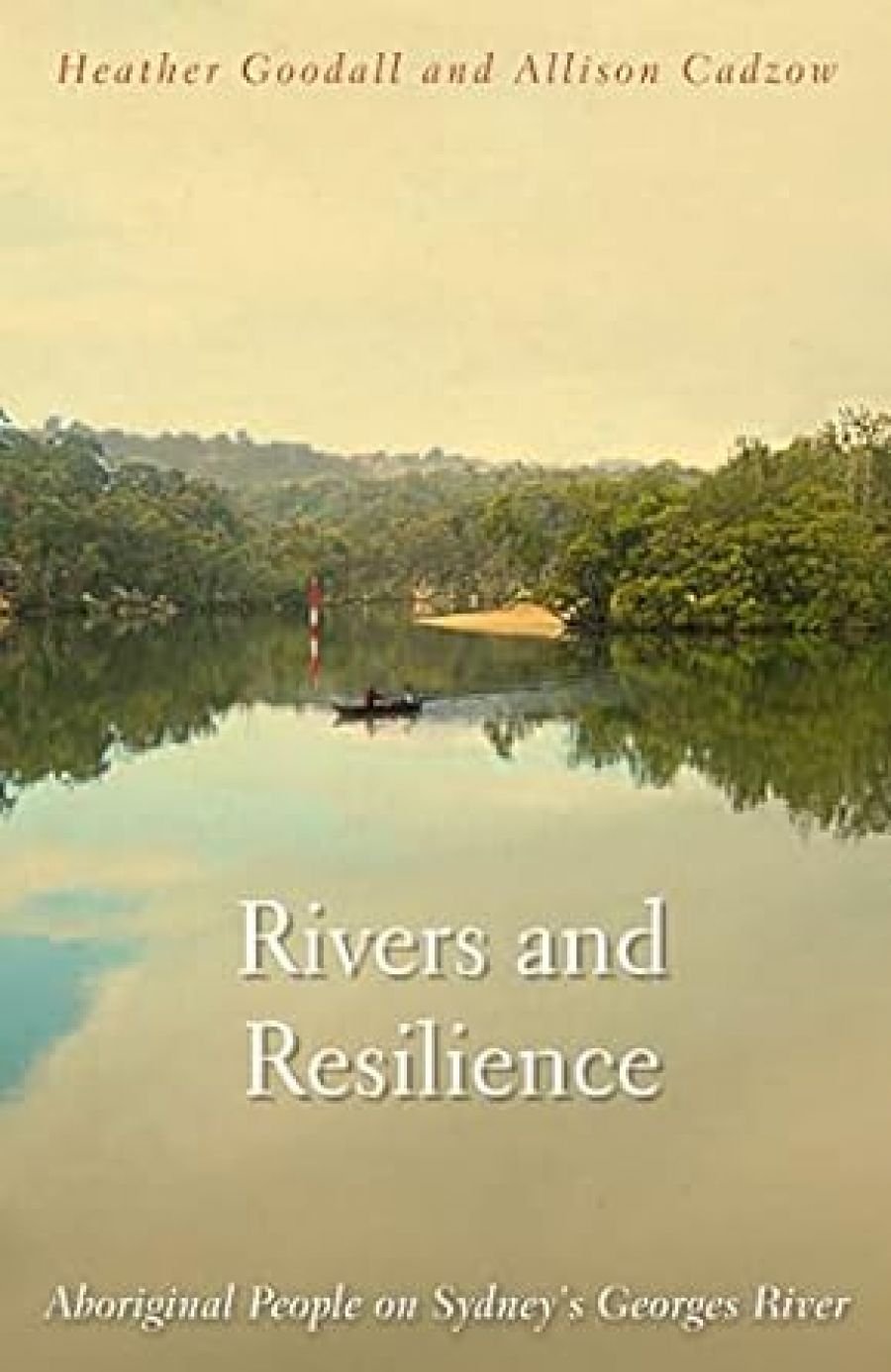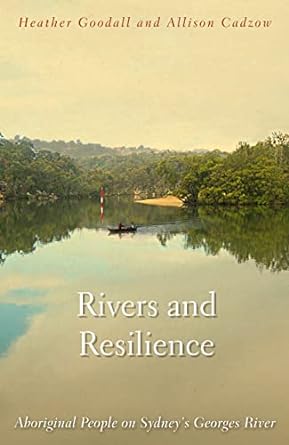
- Free Article: No
- Contents Category: Australian History
- Review Article: Yes
- Article Title: Out of mind
- Online Only: No
- Custom Highlight Text:
This is a celebration of Aboriginal survival on the Georges River, a river which snakes through the south-western suburbs of Sydney and disgorges into Botany Bay.
- Book 1 Title: Rivers and Resilience
- Book 1 Subtitle: Aboriginal People On Sydney’s Georges River
- Book 1 Biblio: University of New South Wales Press, $39.95 pb, 344 pp
- Book 1 Cover Small (400 x 600):

Early in the colonial era, we learn, many dislocated Aborigines showed a genius for mobility and cultural adaptation, gathering at rivers where they created new communities and new lives. Far from being destroyed, they displayed the ‘resilience’ of the book’s title. On Sydney’s Georges River, these communities have thrived to the present day.
The political implications of this capacity for adaptation are significant. In 1998, Victoria’s Yorta Yorta people failed in a native title claim because, according to the judge, ‘the tide of history’ had ‘washed away … any real observance of their traditional customs’. Goodall and Cadzow retort that this judgement devalues cultural change. It insists that only obsolete or lost practices are authentic and that Aborigines who actually adapt forfeit their property rights. By implication, the law declares them to be less Aboriginal.
Judges are not alone in this reification of tradition. Aboriginal advocates regularly claim that traditional cultures and dreaming stories have been ‘unchanged for 40,000 years’. As Goodall and Cadzow imply, it is more likely that traditional cultures are constantly reinvented, that people keep on ‘making locality’. They do not simply ‘inherit’ it fully made.
As Rivers and Resilience shows, the cultural continuity test overlooks the fact that colonial authorities themselves inaugurated new kinds of Aboriginal occupancy, premised on mobile, adaptive communities. In 1850 the government of New South Wales yielded to British concerns about violence against Aborigines by setting aside forty Aboriginal reservations, each at least one mile square. Few of these places appealed to Aborigines, who did not wish to be confined in this way. In any case, farmers on adjoining properties soon began to claw back these reserves because the population surge of the gold rush had led to a boom in demand for farm produce. During the stampede, the status of several of these reserved lands became muddled, and the logic which underpinned them was forgotten. According to Goodall and Cadzow, many of the Georges River families held their lands by the kinds of agreements and customs which, in England, have evolved over centuries but which in Australia were easily snuffed out.
The most engaging sections of this book are the chapters devoted to telling the stories of such Aborigines. Take the case of Lucy Leane. She lived near Holsworthy, where she married an Englishman and raised a family of thirteen children. The couple bought and developed a thirty-three-hectare farm whose produce included grapes, fruit and milk. Lucy was respected throughout the district and held in high regard by the mayor of Liverpool, who, by 1893, had known her for over thirty years. In that year, she petitioned the Aboriginal Protection Board to supply her with a boat so that she could sell her farm produce up and down the river. She based her claim, not on any appeal to charity (she was not poor), but on a proud assertion of her own Aboriginality. ‘Your petitioner,’ she wrote, ‘is the only surviving Native Woman of the Georges River and Liverpool District … a bona fide Original Native of Australia.’ Lucy did not get her boat, but she did affirm that her sense of entitlement was vested in her own Aboriginality.
By the 1920s and 1930s, Aborigines such as Hugh and Ellen Anderson and Tom Williams lived in houses around a tributary of the Georges River, Salt Pan Creek, which is the focus for much of the book. Here they were part of Aboriginal networks that extended through neighbouring suburbs. Sometimes, their presence met with white opposition, and the authorities took steps to ‘move them on’. At other times, they were part of a wider community, their offspring playing with fair-skinned children on the river banks, while Ellen harvested wildflowers, which she sold to white neighbours. When a local store owner, L.C. Webb, died in a car accident in 1933, the Salt Pan Creek Aborigines were the first to arrive at his funeral, walking on bush tracks which were ‘common knowledge to the Aboriginal people’. One report recalled that their ‘lovely wreaths of native flowers and beautifully handwritten note were greatly appreciated by the Webb family’.
It was during this interwar period that the Salt Pan Creek community became a seedbed for Aboriginal politics. Black men and women, inspired by the militant agenda of the Australian Aboriginal Progressive Association (AAPA), and supported by radical Christian groups, began to challenge the new child removal policies of the Aboriginal Protection Board and to develop the ‘Day of Mourning’ protest against the mainstream celebrations of Australia Day. It is a tradition of political engagement and community action which still thrives on the banks of the Georges River.
My one reservation about this book is its academic style: it spends almost two chapters setting up its theoretical concerns, as if the authors were anxious that the power of their stories would fail some kind of academic test. Nevertheless, this is a dignified and humane study, a warm book that gives voice to lives, communities and journeys which, otherwise, many of us would never hear.


Comments powered by CComment